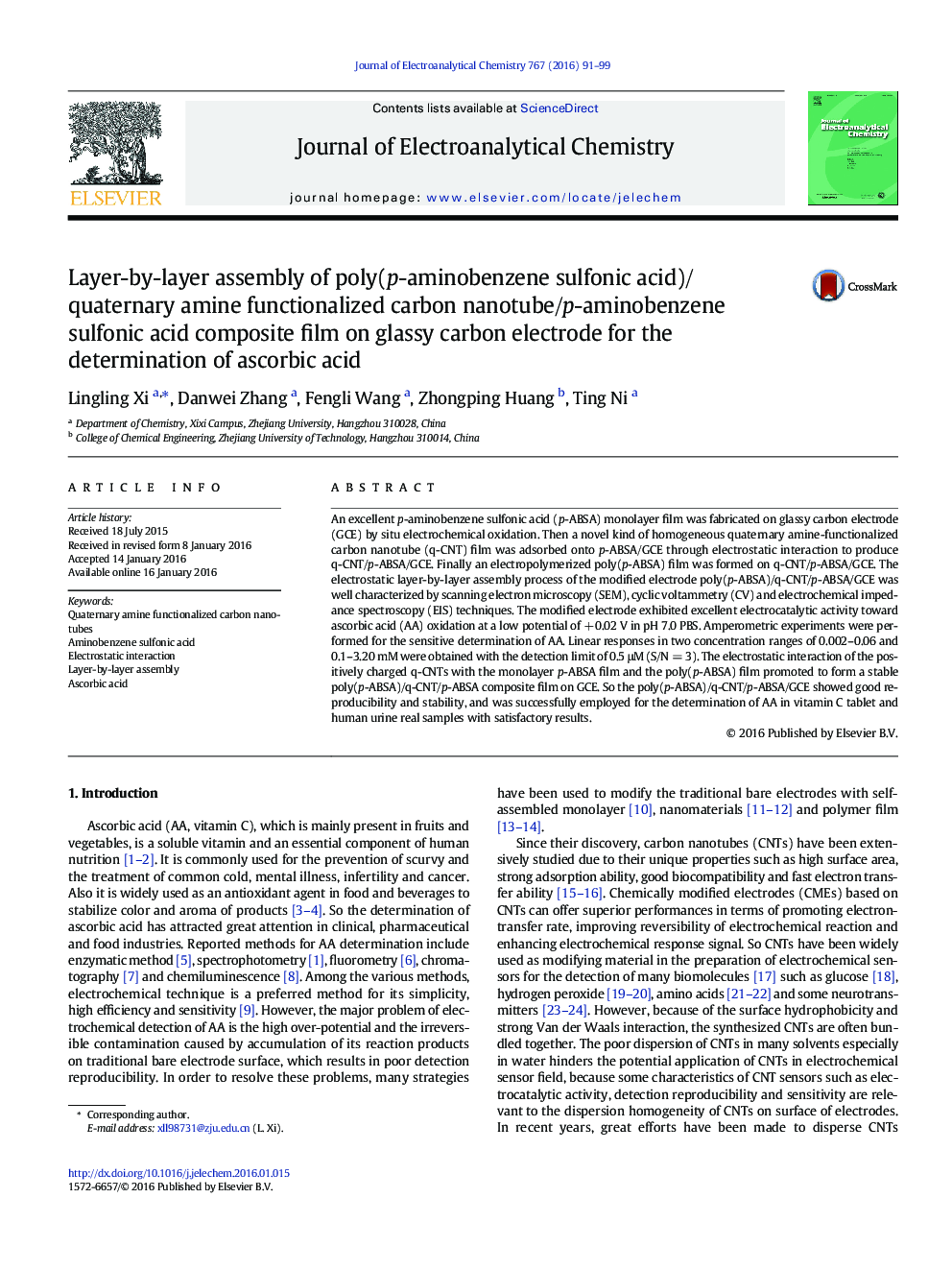| Article ID | Journal | Published Year | Pages | File Type |
|---|---|---|---|---|
| 217988 | Journal of Electroanalytical Chemistry | 2016 | 9 Pages |
•A new CNT composite film modified electrode poly(p-ABSA)/q-CNT/p-ABSA/GCE was fabricated.•The modified electrode showed high stability owing to the strong adsorption of the q-CNTs.•The modified electrode exhibited excellent electrocatalytic activity toward AA oxidation.
An excellent p-aminobenzene sulfonic acid (p-ABSA) monolayer film was fabricated on glassy carbon electrode (GCE) by situ electrochemical oxidation. Then a novel kind of homogeneous quaternary amine-functionalized carbon nanotube (q-CNT) film was adsorbed onto p-ABSA/GCE through electrostatic interaction to produce q-CNT/p-ABSA/GCE. Finally an electropolymerized poly(p-ABSA) film was formed on q-CNT/p-ABSA/GCE. The electrostatic layer-by-layer assembly process of the modified electrode poly(p-ABSA)/q-CNT/p-ABSA/GCE was well characterized by scanning electron microscopy (SEM), cyclic voltammetry (CV) and electrochemical impedance spectroscopy (EIS) techniques. The modified electrode exhibited excellent electrocatalytic activity toward ascorbic acid (AA) oxidation at a low potential of + 0.02 V in pH 7.0 PBS. Amperometric experiments were performed for the sensitive determination of AA. Linear responses in two concentration ranges of 0.002–0.06 and 0.1–3.20 mM were obtained with the detection limit of 0.5 μM (S/N = 3). The electrostatic interaction of the positively charged q-CNTs with the monolayer p-ABSA film and the poly(p-ABSA) film promoted to form a stable poly(p-ABSA)/q-CNT/p-ABSA composite film on GCE. So the poly(p-ABSA)/q-CNT/p-ABSA/GCE showed good reproducibility and stability, and was successfully employed for the determination of AA in vitamin C tablet and human urine real samples with satisfactory results.
